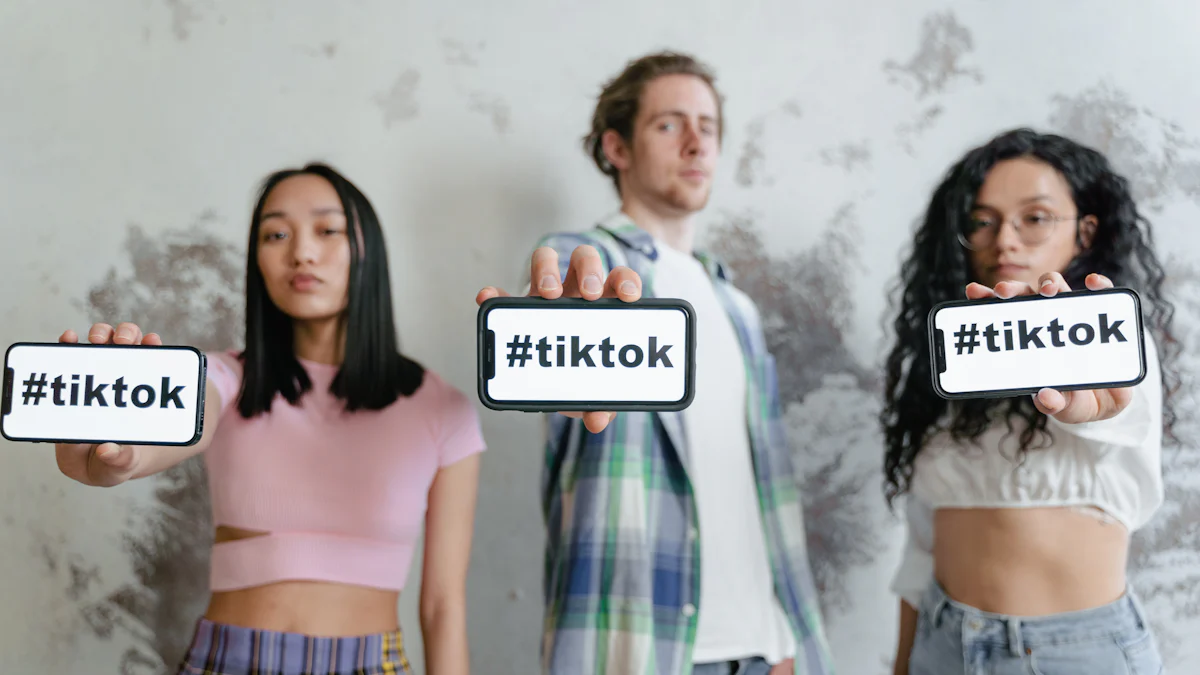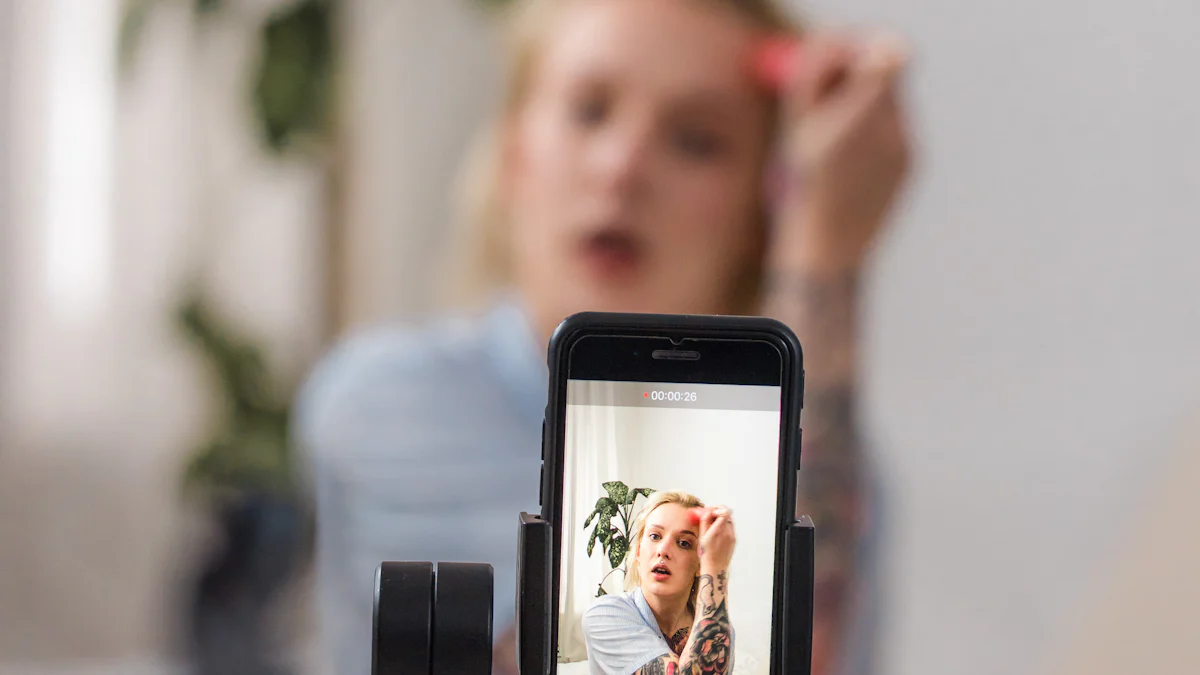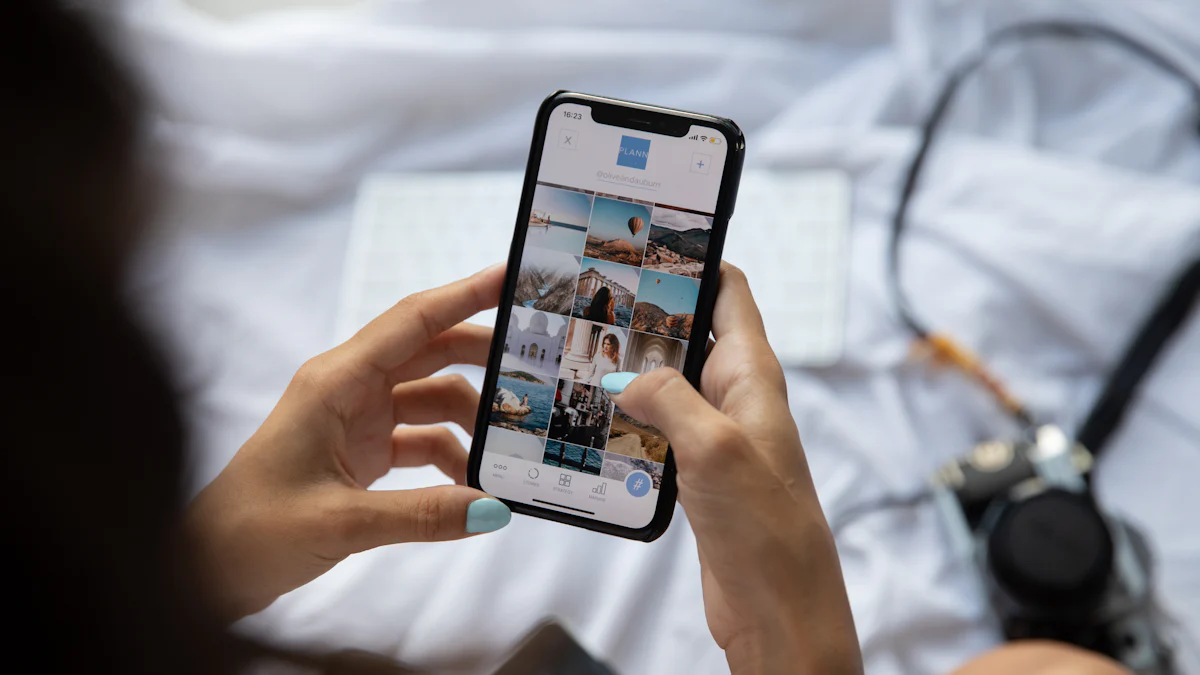Top Tips to Maximize Influencer Marketing ROI in 2025

Influencer marketing is booming in 2025, and it’s no surprise why. Brands are expected to spend $9.29 billion on it this year, a 14.2% jump from 2024. With 25% of companies dedicating 40% of their marketing budgets to influencers, it’s clear this strategy is here to stay. But here’s the catch—success isn’t just about spending big. To stay ahead, you need to focus on how to measure influencer ROI effectively.
Measuring influencer ROI isn’t just about tracking sales. It helps you understand the entire buyer journey, from awareness to purchase. By analyzing campaign performance, you can spot what’s working, fix what’s not, and make smarter decisions for future campaigns. This approach ensures your investment delivers measurable results and keeps you competitive in a crowded market.
Setting the Foundation for Influencer Marketing Success
Define Clear Goals
Before diving into influencer marketing, you need to establish clear goals. Without them, your campaigns can feel aimless and fail to deliver results. Start by identifying what you want to achieve. Are you looking to boost brand awareness, drive engagement, or increase sales? Each goal requires a different approach.
To set clear objectives, think about how your influencer marketing efforts align with your overall marketing strategy. For example, if your focus is brand awareness, you might prioritize influencers with a broad reach. On the other hand, if sales are your priority, you’ll want to track conversions closely. Using SMART goals—specific, measurable, achievable, relevant, and time-bound—can help you stay on track.
Here’s a quick checklist to guide you:
- Define specific goals that shape your campaign.
- Understand your target audience to tailor your strategy.
- Choose influencers who align with your objectives.
- Measure success using tools like analytics platforms.
Choose the Right Influencers
When selecting influencers, remember this golden rule: engagement not audience size. A smaller influencer with a highly engaged audience can often outperform a mega-influencer with millions of followers. Why? Because authenticity matters.
Look for influencers whose values align with your brand. Their audience should overlap with your target audience. Check their engagement rates—likes, comments, and shares—to gauge how connected they are with their followers. Avoid influencers who seem inauthentic or overly promotional.
Here’s how to choose the right influencers:
- Outline your campaign goals.
- Research influencers who fit your niche.
- Calculate their engagement rates.
- Ensure their values match your brand.
Understand Your Target Audience
Knowing your target audience is the backbone of any successful influencer marketing campaign. Who are they? What do they care about? Where do they spend their time online?
Start by researching their demographics—age, location, gender, and interests. Use tools like surveys, social media insights, and web analytics to gather data. This multichannel approach gives you a complete picture of your audience’s preferences.
For example, if your audience is Gen Z, platforms like TikTok or Instagram might be your best bet. If they’re professionals, LinkedIn could be more effective. Tailor your content and platform choices to match their behavior.
By understanding your audience, you can create campaigns that truly resonate and drive results.
Building an Effective Influencer Marketing Strategy

Prioritize Authenticity
Authenticity is the heart of any successful influencer marketing campaign. You need to collaborate with influencers who genuinely align with your brand values. When influencers believe in your product, their enthusiasm shines through, making their endorsements more relatable and trustworthy.
Consumers today trust influencers who provide honest, nuanced feedback. They’re tired of overly polished, generic reviews. Micro-influencers and nano-influencers excel here. Their smaller but highly engaged audiences often see them as friends, which fosters trust and transparency. This connection can significantly boost customer acquisition and retention.
For example, BBQGuys partnered with nine authentic influencers, including cookbook author Shubhra Ramineni and chef Sammy Monsour. Together, they created 105 pieces of content that resonated with audiences, generating over 48,000 engagements. This shows how authenticity can drive meaningful results.
Encourage influencers to create content that feels natural. Let them share their personal experiences with your product. When their voice remains authentic, their audience listens—and acts.
Leverage Multi-Channel Approaches
Don’t limit your influencer marketing efforts to a single platform. A multi-channel approach amplifies your reach and impact. By combining influencer campaigns with other marketing channels, you can engage diverse audiences and create a cohesive brand experience.
Here’s a quick look at the benefits of going multi-channel:
| Benefit | Description |
|---|---|
| Increased Reach | Extends your brand’s reach to different audiences across platforms. |
| Diversified Audience Engagement | Engages users through various formats, like videos, stories, and live streams. |
| Improved Brand Visibility | Boosts your brand’s exposure, making it easier for consumers to discover you. |
| Enhanced Credibility | Builds trust when influencers endorse your brand on multiple platforms. |
| Optimized Targeting | Tailors campaigns to specific demographics and interests. |
| Increased Conversions | Creates a seamless brand experience, leading to higher ROI. |
| Data Insights | Offers valuable insights into consumer behavior to refine your strategy. |
To maximize results, use cross-platform strategies like consistent messaging, collaborative content, and influencer events. For instance, coordinate campaigns across Instagram, TikTok, and YouTube to ensure your message reaches the right audience in the right format.
Balance Creative Freedom with Guidelines
Striking the right balance between creative freedom and brand guidelines is key to a successful influencer marketing strategy. You want influencers to express themselves while staying true to your brand identity.
Start by providing clear but flexible guidelines. Share your brand’s tone, colors, and messaging, but don’t micromanage. Influencers know their audience best, so let them adapt your message in a way that resonates.
Here are some best practices:
- Communicate your goals and expectations clearly.
- Share essential brand elements, like logos and key messages.
- Avoid overwhelming influencers with too many restrictions.
- Encourage collaboration by seeking their input and feedback.
- Monitor performance metrics to refine future campaigns.
When you foster a collaborative relationship, influencers feel valued. This leads to more authentic and impactful content that aligns with your brand while engaging their audience.
Experiment with Emerging Trends
Explore new platforms like TikTok and BeReal for 2025 campaigns
In 2025, staying ahead means embracing platforms where your audience already spends their time. TikTok and BeReal are two platforms you can’t ignore. TikTok continues to dominate with its video-centric approach, while BeReal offers a refreshing take on authenticity. Both platforms give you unique ways to connect with your audience.
Take American Eagle as an example. They’ve been experimenting with BeReal by showcasing a new product daily and offering promo codes. One campaign featured an oversized crew neck sweatshirt, and customers could snag an automatic discount online. On TikTok, they launched the #AEHolidayCard challenge. This encouraged creators to stage holiday card photo shoots in their apparel, with prizes for the best entries. These strategies not only boosted engagement but also drove measurable sales.
You can follow their lead by tailoring your campaigns to each platform’s strengths. TikTok thrives on creativity and trends, so think about challenges, short videos, or influencer collaborations. BeReal, on the other hand, is all about unfiltered moments. Use it to showcase behind-the-scenes content or exclusive product drops.
Incorporate interactive content formats like live streams or AR
Interactive content is the future of influencer marketing. Formats like live streams and augmented reality (AR) create immersive experiences that grab attention and keep your audience engaged. Live streams let influencers connect with followers in real time, answering questions and showcasing products authentically. AR, on the other hand, allows users to interact with your brand in fun and innovative ways.
For example, you could partner with influencers to host live Q&A sessions about your products. Or, create AR filters that let users “try on” your products virtually. These formats not only entertain but also build trust and drive conversions.
Pro Tip: Experiment with these trends early. The brands that innovate now will lead the pack in 2025.
How to Measure Influencer ROI and Optimize Campaigns

Track Key Metrics
To measure influencer ROI effectively, you need to focus on the right metrics. These metrics help you understand how well your influencer marketing efforts are performing and where you can improve. Here’s a quick breakdown of the most important ones:
| Metric | Description |
|---|---|
| Conversions | Tracks actions like sign-ups, sales, or promo code usage. |
| Revenue | Measures the income generated directly from influencer campaigns. |
| Reach and Impressions | Shows how many people saw your content and how often it appeared. |
| Cost per Engagement | Calculates how much you’re spending for each like, comment, or share. |
| Return on Ad Spend | Reveals how much revenue you earn for every dollar spent on influencer marketing. |
| Customer Lifetime Value | Estimates the total revenue a customer will bring over their relationship with your brand. |
Using tools like Google Analytics, NeoReach, or CreatorIQ can simplify tracking these metrics. These platforms provide real-time insights into campaign performance, helping you make data-driven decisions.
Pro Tip: Don’t just track numbers. Look at the story behind the data to understand what’s driving your results.
Use Data-Driven Decision-Making
Data is your best friend when it comes to refining your influencer campaigns. Start by analyzing past campaign data. What worked? What didn’t? Look at both quantitative metrics like engagement rates and qualitative feedback from your audience. This will help you identify patterns and areas for improvement.
A/B testing is another powerful tool. For example, Vestiaire Collective ran A/B tests with eight influencers on TikTok to promote a new shopping feature. By giving influencers creative freedom, they achieved over 4,000 app installs and reduced their cost per install. Testing different approaches like this can reveal what resonates most with your audience.
Here’s how you can use data effectively:
- Review past campaign performance to spot trends.
- Test different content styles, platforms, or influencers.
- Use the insights to refine your strategy for better results.
Optimize Campaigns Continuously
Optimization isn’t a one-time task—it’s an ongoing process. Start by setting clear goals for your influencer campaigns and monitoring performance metrics in real time. If something isn’t working, adjust your strategy. For instance, reinvest in high-performing influencers or double down on content types that drive engagement.
Regularly generating performance reports can also help you stay on track. Use these reports to identify what’s working and where you need to pivot. Don’t forget to stay updated on industry trends and integrate feedback from both influencers and your audience.
Here are some tips to keep your campaigns optimized:
- Use analytics tools to track reach, engagement, and conversions.
- Encourage user-generated content to boost authenticity.
- Continuously refine your approach based on data insights.
By staying flexible and data-driven, you can ensure your influencer marketing delivers consistent results.
Avoiding Common Mistakes in Influencer Marketing
Poor Influencer Selection
Choosing the wrong influencer can hurt your brand more than you think. It’s not just about follower count. Picking someone who doesn’t align with your brand values or audience can damage your reputation, confuse your messaging, and make your campaigns feel inauthentic.
Here’s a quick breakdown of the risks and how to avoid them:
| Risk Type | Mitigation Strategy |
|---|---|
| Damage to brand reputation | Thorough vetting of influencers |
| Loss of authenticity | Continuous monitoring of influencer content |
| Confusion of brand position | Developing bespoke safety vetting guidelines |
To avoid these pitfalls, focus on influencers who genuinely connect with your target audience. Look beyond vanity metrics like follower count. Instead, prioritize engagement rates and shared values. This approach ensures your influencer marketing campaigns feel authentic and resonate with your audience.
Lack of Transparency
Transparency is non-negotiable in influencer marketing. Failing to disclose paid partnerships can lead to legal trouble, erode trust, and harm your brand’s credibility.
To maintain trust, always ensure influencers clearly label sponsored content. Communicate expectations upfront and follow disclosure guidelines. Many brands, like Brand A and Brand B, have successfully built trust by being transparent. Brand A ensured influencers genuinely liked the products they endorsed, while Brand B worked with eco-conscious influencers to promote sustainability. These efforts not only boosted credibility but also strengthened customer loyalty.
Short-Term Thinking
Influencer marketing isn’t a one-and-done strategy. Building long-term relationships with influencers creates trust and leads to more effective campaigns.
"Brand trust goes so much further than one-off exposure. Repeated awareness shows my audience that I really am committed to a product, brand, or service." – Maddy Gutierrez
Long-term collaborations allow influencers to tell authentic stories about your brand. This consistency builds a sense of community and keeps your audience engaged. Plus, 79% of influencers prefer longer-term partnerships, making it a win-win for everyone.
To build long-term relationships, invest in influencers who align with your brand values. Work with them on multiple campaigns and involve them in your brand’s journey. This approach delivers sustained value and helps you stand out in a crowded market.
Maximizing influencer marketing ROI in 2025 starts with clear goals and the right influencers. Focus on those who align with your niche and have authentic, engaged followers. Build campaigns that feel genuine and connect with your audience.
To succeed, track performance metrics like engagement and conversions. Avoid common mistakes like poor influencer selection or short-term thinking. Collaborate with influencers to create unique, high-quality content you can repurpose across channels.
Remember, prioritizing authenticity and long-term relationships will help you stand out. Start implementing these strategies today to see real results!
FAQ
What is influencer marketing ROI, and why does it matter?
Influencer marketing ROI measures the return you get from your investment in influencer campaigns. It matters because it shows how effective your campaigns are at driving results like sales, engagement, or brand awareness. Tracking ROI helps you make smarter decisions and maximize your budget.
How do I calculate influencer marketing ROI?
Use this formula:
ROI = (Revenue Generated - Campaign Costs) ÷ Campaign Costs × 100
For example, if you spent $5,000 and earned $15,000, your ROI is 200%. Tools like Google Analytics can simplify this process.
Should I work with micro-influencers or mega-influencers?
It depends on your goals. Micro-influencers often have higher engagement rates and feel more authentic. Mega-influencers offer broader reach. If you want trust and niche audiences, go micro. For mass exposure, go mega. Balance both for the best results.
How can I ensure influencers align with my brand?
Research their content, values, and audience. Check their engagement rates and past collaborations. Look for influencers who genuinely use products like yours. Authenticity is key—if they don’t believe in your brand, their audience won’t either.
What’s the best way to track campaign performance?
Use tools like CreatorIQ or Google Analytics. Focus on metrics like engagement, conversions, and cost per acquisition. Set clear goals before launching your campaign. Regularly review data to see what’s working and adjust your strategy as needed.
Pro Tip: Always ask influencers for performance reports to get deeper insights into their impact.
